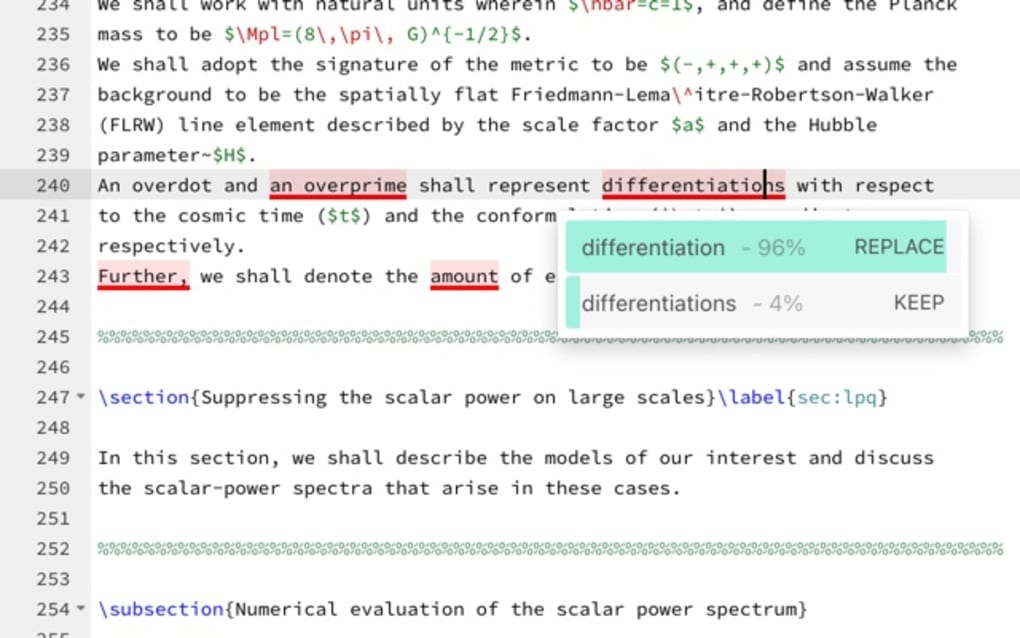

The same API is used by Open Access publisher Hindawi as a pre-submission structural checks tool for authors. Writefull's Metadata API is also being used to automate aspects of manuscript review, ensuring that all elements of an article are complete prior to publication. The same Manuscript Categorization API is now part of ACS’s quality control program, to evaluate the language in manuscripts after copyediting.

After thorough benchmarking alongside human editors, Writefull reached more than 95% alignment in grading texts, significantly reducing the time ACS spends on manuscript evaluation. Using ACS’s own classification criteria, the API assigns a level-of-edit grade to manuscripts at scale without editors having to open documents and review the text. Writefull’s Manuscript Categorization API is now used by ACS before copyediting to automatically classify all accepted manuscripts by their language quality. Thanks to Writefull’s APIs, its tech can be applied at all key points in the editorial workflows. It identifies potential language issues with written texts, offers solutions to those issues, and automatically assesses texts’ language quality. Writefull’s proprietary AI technology is trained on millions of scientific papers using Deep Learning. One of the world’s largest scientific societies, ACS publishes more than 300,000 research manuscripts in more than 60 scholarly journals per year.
#Writefull tool full
In a partnership that began almost two years ago, ACS has now progressed to a full integration of Writefull’s application programming interfaces (APIs) for three key uses. Want to learn more about the best ways to use AI in your writing? Register for our forthcoming webinar.Newswise - Writefull’s world-leading AI-based language services have been integrated into the American Chemical Society’s (ACS) Publications workflow. Don’t take anything at face value and remain skeptical, the same way you would with claims made in other research papers. Check the accuracy of any information or figures presented by checking primary sources. Language proofreading tools (think of Writefull’s automated copyediting, Paraphraser, or Academizer widgets) are widely available, and unlike ChatGPT, don’t produce ideas to ‘steal’ from.Īlways keep in mind the risk of spreading false claims through generative AI. If you’re not confident in your grammar and word use, it’s completely fine to use AI-based tools for help. Also, acknowledge credit where it is due. Use ChatGPT as a first port of call to generate ideas, but don’t just copy-paste its output into your text.
#Writefull tool how to
How to make the best use of AI for my scientific texts? All it can do is learn from the internet, biases and ‘fake news’ included. Remember that ChatGPT doesn’t know right from wrong. Erroneous content can then spread to other papers, and ‘contaminate’ the field. Even if it’s not the work of another human being, it still counts as a breach of academic integrity.Īnother danger of incorporating generative AI into your academic texts is repeating false information. When re-using ChatGPT’s output, you are using something that isn’t your work and passing it as your own. Plagiarism refers to the practice of using somebody else’s work without acknowledging it. The two biggest concerns around using AI for academic writing are plagiarism and misinformation. What are the pitfalls of using generative AI for academic writing? Writefull’s output is no doubt more limited than that of ChatGPT, but it is more tailored to the content at hand.īoth ChatGPT and Writefull have potential to make scientific writing faster and easier.

Combining models from both OpenAI and Writefull, Writefull’s TexGPT generates tables, figures, formulas, statements and explanations within Overleaf (a LaTeX editor).
#Writefull tool generator
Writefull’s generative AI widgets, such as the Title Generator and Abstract Generator, produce parts of a paper based on its abstract or body. This writer, an applied linguist, tested it on its knowledge of formulaic language and was surprised by the quality of the answer. From drafting a text, answering questions, summarizing articles from various disciplines, highlighting research gaps, to finding academic papers, its capabilities are wide-ranging and powerful. Which AI tools are best for academic writing?ĬhatGPT, the conversational bot everyone’s talking about, can be used to assist scientific writing. But how to use it wisely and effectively? For students, it has huge potential when it comes to writing papers and essays. The rise of generative AI (AI that produces text, images, or other media in response to prompts, such as ChatGPT) has opened up many possibilities for writers.


 0 kommentar(er)
0 kommentar(er)
